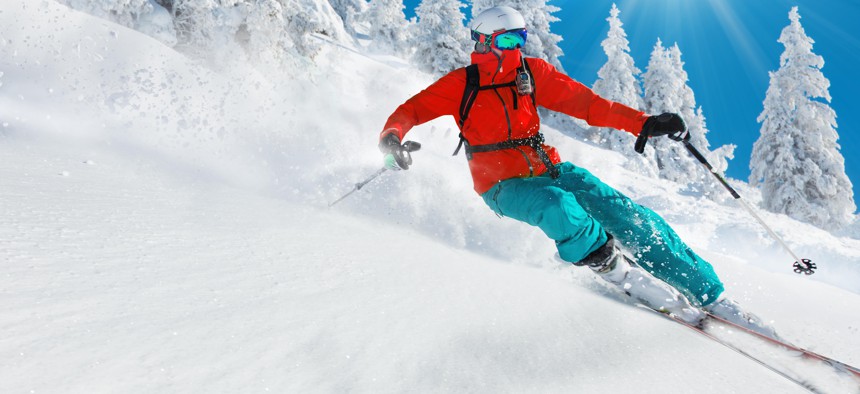Dollar Value of Outdoor Recreation For Each State Detailed in New Data

Skiing is just one of the outdoor recreation activities that is contributing to significant economic output gains for some states. Shutterstock
More states in recent years have been devoting special attention to the outdoor recreation economy. The figures help show its size.
Outdoor recreation activities like skiing, boating and hunting generate billions of dollars of economic activity across the U.S. each year and support thousands of jobs.
New federal statistics shed additional light on the footprint that this segment of the economy has in each state. The government is issuing the data for 2017 as more states in recent years have created offices or staff positions to focus on economic development and other policy issues related to the outdoors.
In assessing the outdoor economy, the Bureau of Economic Analysis casts a relatively wide net, looking at activities like bicycling, kayaking and hiking. The bureau also incorporates less obvious categories like motorcycling, “RVing,” festivals and amusement parks, as well as supporting activities like construction and lodging.
The statistics indicate that outdoor recreation overall accounted for $427 billion, or 2.2%, of the nation’s gross domestic product in 2017. The figures also show that this part of the economy grew by 3.9% that year—faster than the 2.4% growth rate of the U.S. economy as a whole.
At the state level, the size of the outdoor recreation sector as a share of the overall size of state economies ranged from 1.2% in Washington, D.C. to 5.4% in Hawaii. Other states where outdoor recreation as a share of total economic output was in the 4% to 5% range were Montana, Maine, Vermont, Wyoming, Florida and Alaska.
Value added to state economies from outdoors-related activity ranged from $1.2 billion in North Dakota to $52 billion in California.

States with the most jobs linked to outdoor recreation include California (588,680), Florida (502,939), Texas (340,798), New York (293,447), and Pennsylvania (173,588).
The states where the jobs make up the largest proportion of total employment include Wyoming (8.0%), Hawaii (7.9%), Maine (6.4%), Alaska (6.4%) and Montana (5.9%).
Boating and fishing together in 2017 were the largest “conventional” outdoor recreation activity in terms of dollar value, checking in at $20.9 billion. In terms of “industry composition,” BEA says that outdoors retail was worth $95 billion and manufacturing $51 billion.
The BEA figures allow for some detailed insights about each state.
Take Colorado for instance.
The data shows that outdoor recreation added about $11 billion of value to the state's economy in 2017. Of that sum, $1.5 billion came from “snow activities,” like skiing and snowboarding. Outdoor retail generated about $2.2 billion and roughly 38,000 jobs.
Utah in 2013 was the first state to launch an outdoor recreation office. Since then, at least 10 other states have followed suit.
And last year, eight states signed onto the “Confluence Accords,” a document that outlines principles for how states approach the outdoor recreation sector when it comes to areas like conservation, workforce training, economic development and public health.
Some rural areas facing declines in industries like mining have staked future economic hopes on attracting more outdoor recreation dollars. This approach can draw mixed support because jobs in outdoor recreation fields don’t always pay as well as those in heavy industry.
But the BEA data provides another tool that state and local leaders can turn to as they consider where opportunities might lie.
The state statistics are still in their “prototype” phase and the agency is seeking feedback on them through March of next year. BEA plans to issue its first official state outdoor recreation economy figures next fall. A full copy of the latest data can be found here.
PREVIOUSLY on Route Fifty:
Bill Lucia is a Senior Reporter for Route Fifty and is based in Olympia, Washington.
NEXT STORY: How Cities Can Cool Down Urban Heat Islands






